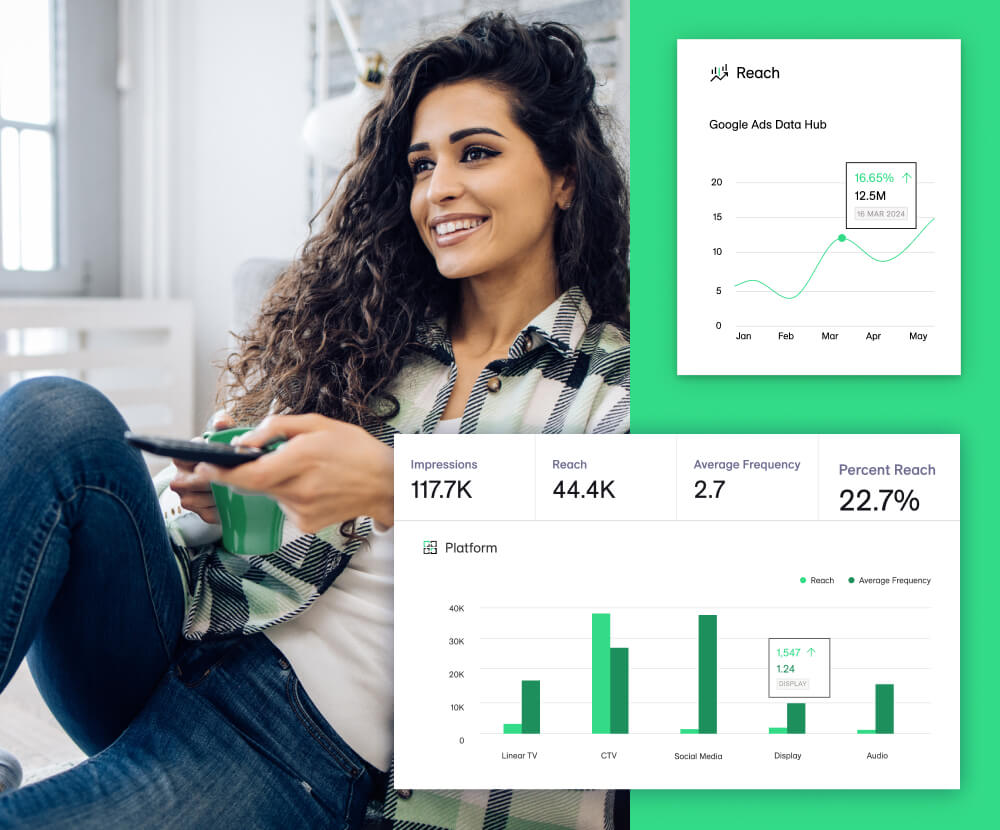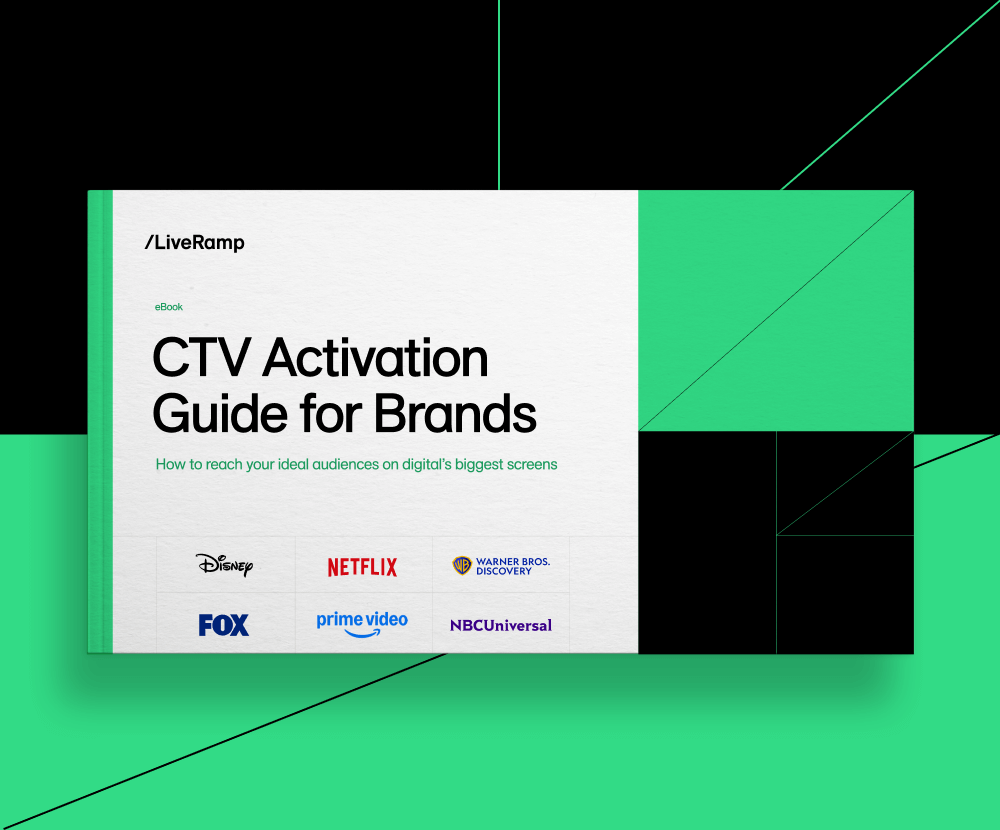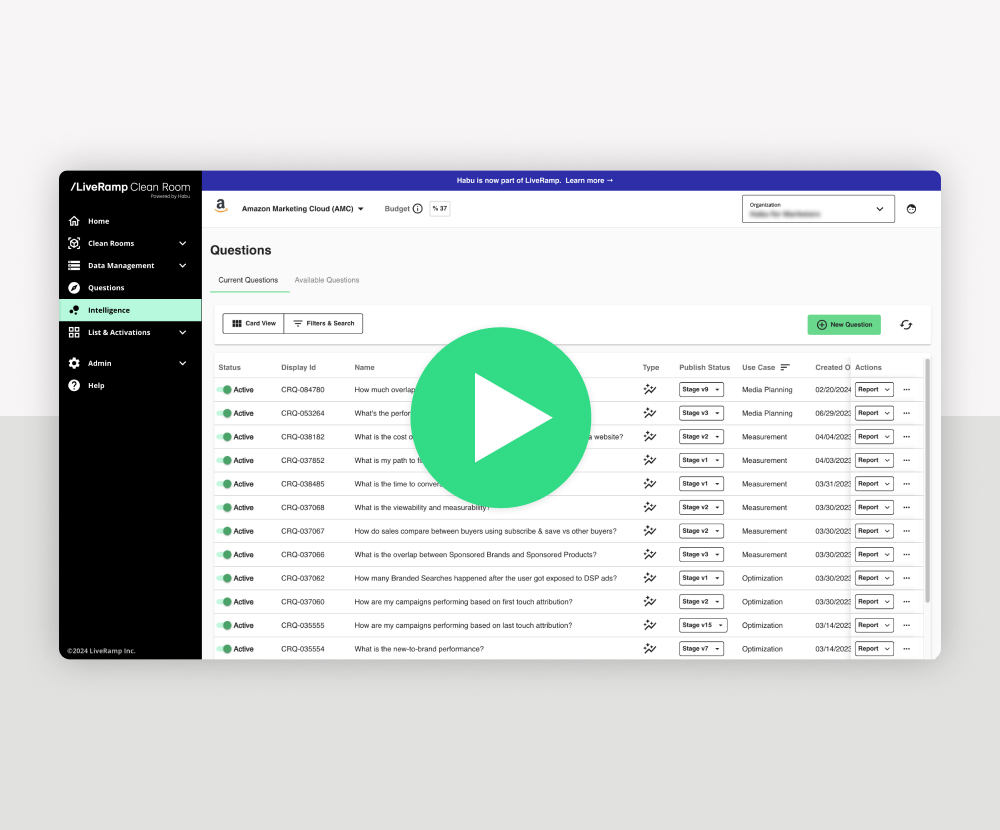CTV Measurement Challenges and How to Overcome Them

The $30 billion connected TV (CTV) advertising market is growing fast – but most brands are flying blind on measurement. While 70% of US consumers stream content across multiple platforms, marketers are stuck with fragmented data that makes proving CTV's true impact challenging. The brands that solve measurement first will dominate this massive opportunity.You’ve come to the right place for help. This blog explores the most pressing CTV measurement challenges and practical ways you can overcome them with the right strategy and tools.
Key takeaways
- CTV measurement is complex due to fragmented platforms, siloed data, and a lack of standardization.
- Common challenges include poor cross-device attribution, a lack of standardized metrics, and brand safety and ad fraud.
- Data collaboration can unlock accurate measurement across CTV and other digital channels.
- Marketers that overcome these challenges can maximize ROI, unlock incremental reach, and elevate their media strategies.
{{ctv-activation-guide}}
Why is CTV measurement more complex than traditional digital advertising?
CTV spans a wide range of devices, platforms, and content ecosystems, each with different data collection practices and measurement standards. Add in signal loss because of privacy changes and limited transparency from publishers, and the result is a nuanced landscape that’s hard to understand holistically.
7 critical CTV measurement challenges holding advertisers back
While connected TV (CTV) is one of the fastest growing channels in digital advertising, it’s also one of the hardest to measure. Fragmented platforms, inconsistent metrics, and limited transparency leave many marketers struggling to prove performance or justify budget. These challenges present opportunities, however, and the brands that solve CTV measurement first will be the ones that win.Below, we discuss seven of the most pressing CTV measurement challenges, and more importantly, how to overcome them with the right strategy, tools, and partnerships, including:
- Platform fragmentation and data silos
- Lack of standardized metrics
- Measuring incremental reach
- Brand safety and ad fraud concerns
- Limited transparency from platforms
- Cross-channel attribution issues
- Difficulty proving business impact
Each challenge is paired with a practical solution to help you move from fragmented measurement to confident decision-making.
1. Platform fragmentation and data silos
Challenge
In many ways, what’s happening in CTV reflects broader shifts in digital consumer behavior. Audiences are engaging across more devices, platforms, and content providers than ever before, which is creating a highly fragmented inventory landscape. This fragmentation makes it difficult to understand consumers’ interactions across environments and accurately measure reach and frequency. The challenge is only growing as traditional signals disappear and privacy regulations become more stringent.
Solution
Consumers will likely always enjoy engaging across many platforms, so these silos will continue to exist. However, you can adopt tools to bring together insights from these different environments. Data collaboration helps you break down silos by connecting different data sets across platforms and partners so that you can turn fragmented views into a unified measurement strategy.
2. Lack of standardized metrics
Challenge
CTV platforms define metrics like impressions, completions, and reach differently, making it difficult to compare performance across partners or channels. These inconsistent measurement methodologies become a bigger challenge with fragmentation, where a growing number of content providers and platforms each operate with their own standards. The result is a fragmented view of campaign performance, limiting your ability to optimize media investments across the CTV landscape.
Solution
You need to deliver deduplicated, consistent measures across linear TV, CTV, and digital. Channel-by-channel reporting for these siloed data sources is complex and inaccurate. Cross-media measurement enables connectivity across all of those data sources for a unified and standardized view of performance. “Bringing all of those sources together and making sure that they’re de-duplicated on an identity level, on a person level, and a household level is really important to be able to carry through measurement and pin a business outcome to the media that was run.” - Melanie Brown, VP of Advanced TV at Tubi.
3. Measuring incremental reach
Challenge
Many marketers still treat linear and CTV as separate channels, adding CTV after the fact to extend reach. But this outdated approach doesn’t align with how today’s consumers engage with content across multiple screens. Without a unified view of reach, it’s easy to waste impressions through audience duplication and miss optimization opportunities. Siloed data and manual processing make this even harder, limiting your ability to truly understand which combinations are driving incremental results.
Solution
To measure incremental reach effectively, you need to evaluate all media channels simultaneously. Cross-screen measurement capabilities can help you unify data across linear, CTV, and digital to give you a holistic view of reach, frequency, and performance. By understanding where and how your audiences are engaging, you can reduce waste, improve creative allocation, and drive incremental reach with the same budget.
4. Brand safety and ad fraud
Challenge
As the CTV ecosystem grows, so do the risks of ad fraud and brand safety issues. Spoofed inventory, invalid traffic, and limited transparency into where ads appear or who’s viewing them make it difficult for you to conduct quality checks. While buying directly from premium publishers can help mitigate these problems, many advertisers want to scale their reach across a broader mix of apps and streaming services. In this dynamic landscape, ensuring viewability, verification, and brand-safe placements becomes more complex without the right safeguards in place.
Solution
Mitigating risk starts with knowing who exactly you’re reaching. Identity resolution capabilities provide a solid foundation for data activation and measurement in CTV, making it harder for fraudsters to manipulate ad impressions and enabling advertisers like you to distinguish real engagements from fraudulent activity.
5. Lack of transparency
Challenge
Transparency in CTV remains a persistent challenge. Many publishers and platforms don’t provide advertisers with full insight into placement, performance, or even whether an ad was truly seen. Without universal identifiers or consistent data standards, advertisers lack the visibility needed to confidently improve campaigns and measure results.
Solution
By leveraging powerful partnerships and clean room technology, you can gain valuable insights into CTV ad delivery, frequency, and audience engagement to inform your decisions. Learn how our partnership with Microsoft Advertising enhances security and enables marketers like you to effectively measure campaigns, enhance strategic collaborations, and maximize every customer touchpoint for improved performance.
6. Cross-channel attribution
Challenge
Cross-channel attribution is the process of determining which marketing touchpoints led to a desired outcome. Tying CTV impressions to downstream conversions across web, app, and in-store channels is notoriously difficult because it lives in a fragmented ecosystem with inconsistent identifiers and limited signal sharing. Without a clear view of how CTV fits into the broader customer journey, you risk underestimating its true impact and misallocating budgets.
Solution
By resolving identity across CTV publishers, platforms, and environments, LiveRamp helps you link ad exposures to site visits, app installs, or in-store purchases. This allows you to accurately assess the incremental contribution of CTV, understand its role alongside other channels, and continuously optimize for performance. Clean rooms build on a strong identity resolution foundation and enable marketers to gain deeper insights while respecting consumer privacy. “With clean room technology, you can think about Kroger and Roku working together with not just one but multiple brands. You can bring in the brand data itself and show offline conversions, or bring in other CTV providers or retail partners. All of these things are part of a larger ecosystem that becomes that much more powerful.” - Derek Leonard, Head of Data Collaboration at Roku
7. Prove business impact
Challenge
CTV’s impact can be hard to prove using traditional measurement frameworks. Most agencies and internal teams are still evaluated against fixed, year-over-year KPIs like ROAS, inflation mitigation, or cost efficiency. These metrics don’t always align with newer channels like CTV that lack historical benchmarks. Without being able to link CTV exposures to real results, marketers risk not investing enough in this effective channel.
Solution
Modern channels need modern measurement. Data collaboration can help connect CTV impressions to real business outcomes like transactions, conversions, and customer acquisition. According to a recent Forrester Total Economic Impact™ study, a composite organization using LiveRamp’s platform achieved a 313% ROI and $9.6M in business benefits over three years. This kind of transparency empowers teams to test, learn, and scale CTV campaigns without being held back by outdated KPIs.
The future of CTV measurement
As CTV matures, advertisers can no longer rely on siloed insights or outdated KPIs. The future belongs to those who unify data, respect privacy, and adapt measurement to meet today’s viewers.
Get started with LiveRamp’s CTV measurement solutions
Simply put, CTV is too important to leave measurement up to chance. LiveRamp’s cross-media measurement solutions give you the confidence, clarity, and control to make smarter decisions and drive real business results.
{{demo-liveramp-clean-room}}
More FAQs about CTV measurement challenges
How do privacy regulations impact CTV measurement accuracy?
They limit access to viewers’ personal information, making it harder for marketers to keep track of users as they switch across devices.
Can CTV measurement challenges be solved with current technology?
Yes, with the right data collaboration tools and infrastructure, advertisers can overcome fragmentation, achieve attribution, all while respecting user privacy.
Why is cross-device attribution so difficult in CTV?
CTV doesn’t rely on cookies or mobile identifiers, making it harder to tie exposures to individual users without a robust identity framework.

Reach audiences on digital's biggest screens
Level up your data-driven CTV advertising today.

Demo Liveramp's Clean Room
Discover the power of the LiveRamp Clean Room

